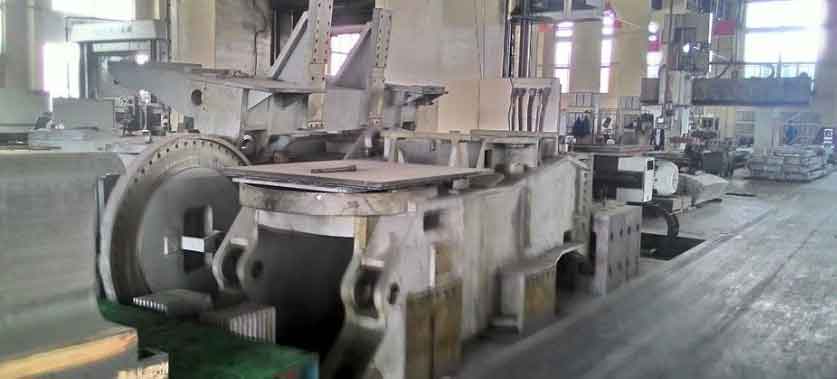Abstract
Squeeze casting, characterized by the crystallization of molten metal under high pressure, results in castings with reduced shrinkage, a dense structure, and excellent mechanical properties, achieving “near net shape” formation. With the increasing demand for large casting parts in the market, this technology has gained significant attention for improving casting performance and defects. However, due to equipment limitations in China, research on squeeze casting for large casting parts is relatively scarce. Therefore, conducting research on the forming method and system for squeeze casting of large casting parts is of great significance.

This paper presents a comprehensive study on the forming method, design theory, simulation analysis, testing technology, and experimental research of the squeeze casting system for large casting parts.
Table 1: Key Characteristics of Squeeze Casting
| Characteristic | Description |
|---|---|
| Process | Molten metal is crystallized under high pressure |
| Advantages | Reduced shrinkage, dense structure, excellent mechanical properties, near net shape |
| Application | Increasingly demanded in manufacturing, especially aerospace |
| Research Status | Limited in China due to equipment squeeze pressure limitations |
Composite Squeeze Casting Method
Based on the analysis of direct and indirect squeeze casting methods, this paper proposes a composite squeeze casting method tailored for large casting parts.
Table 2: Comparison of Direct and Indirect Squeeze Casting
| Method | Advantages | Disadvantages |
|---|---|---|
| Direct Squeeze Casting | Short pressure transmission distance, ability to produce plastic deformation within the casting | Difficulty in ensuring precise quantitative filling of large volumes of molten metal |
| Indirect Squeeze Casting | Suitable for complex shapes | Difficulty in transmitting pressure to distant parts of the casting, potential for defects in the pouring channel’s distal end |
Composite Squeeze Casting
Combines the advantages of both methods: uses an independent filling device to fill the mold under pre-closed conditions, followed by pressure application from the upper mold until the casting solidifies.
Key Technical Issues and Solutions
Table 3: Key Technical Issues and Proposed Solutions
| Issue | Solution |
|---|---|
| Large Volume Molten Metal Delivery | Use of enclosed pipelines to reduce oxidation and air contact, pre-closing of the mold before filling |
| Filling Speed Control | Moderate filling speed to avoid premature solidification or turbulence |
| Extrusion Pressure Requirement | High extrusion pressure due to the large受压 area of large casting parts, requiring advanced equipment |
System Design and Simulation
The overall design of the composite squeeze casting system includes key subsystems: mold design, process parameter management, and squeeze casting equipment.
Production logistics system simulation was conducted to analyze the timing relationship of devices and idle rates, exploring ways to improve productivity and equipment utilization.
Metal Melt Delivery System
The metal melt delivery system must meet the following requirements:
- Quantitative Delivery: High accuracy and stability in metal melt volume.
- Adjustable Delivery Speed: To cater to different materials and sizes.
- Stable Melt Flow: To avoid defects like entrapped air.
Mold Design
The mold design focuses on floating rigid support to ensure quantitative filling and improve casting quality.
Experimental Research
The composite squeeze casting system was manufactured and tested using Al-Cu material for large wheel hubs. The results showed quick pressure build-up, improved casting quality, and verified the feasibility, effectiveness, and practicality of the system for large casting parts.
Conclusion
This paper proposes a composite squeeze casting method for large casting parts, designs and manufactures the corresponding equipment and peripheral devices, and conducts experimental research. The results demonstrate the system’s capability in forming large casting parts with high precision and performance, laying a technical foundation for the development of larger squeeze casting equipment and the formation of various large casting parts.
